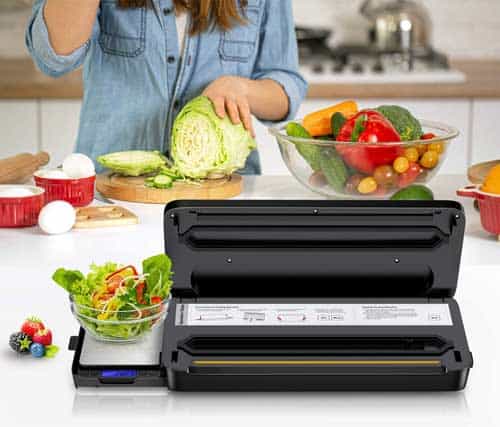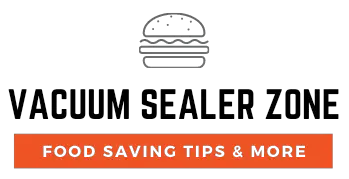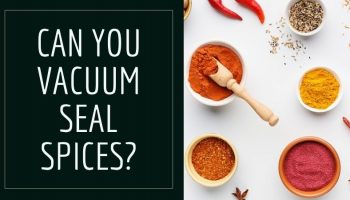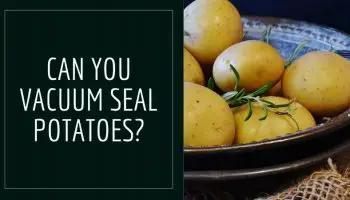Vacuum sealing food is a great way of preserving it and ensuring that it stays fresh for longer. The method is safe and can be used for most foods from meats to vegetables and rice.
When vacuum sealing, the aim is usually to prevent air from coming into contact with the food put in the sealer. This prevents the growth of bacteria and ensures that the food is well stored.
However, this will only prevent aerobic bacteria which requires oxygen to survive while there is anaerobic bacteria which does not need oxygen to survive. Here we will be looking more into vacuum sealing food and how to do it right.
How long does vacuum sealed food last?
Vacuum sealed food lasts longer than that stored in any other way. Food can stay well from 2 weeks to 3 years depending on the state it is in and its type. Food can be either dry, frozen, raw, or cooked. Vacuum sealing provides 3-5 times more preservation than other storage methods. It is economical, saves time, keeps food fresh for longer, and prevents food from freezer burn.
Shelf-life of foods in vacuum sealers
You can store most foods in vacuum sealers if you need to preserve them for long. The shelf life of the foods that you can keep depending on their state is:
Raw Foods
Raw foods are those still in their untouched forms like fresh fruits, vegetables, and others. These go bad quickly and easily attract bacteria that can make one sick.
When raw and simply refrigerated they would not last long and can remain fresh for only for days but when vacuum sealed they can stay for as long as 2 weeks while maintaining freshness.
Dry Foods
Dry foods include foods like sugar and flour. Normally they would last for about 6 months but when vacuum sealed they can stay for as long as 2 years.
Cooked Foods
If you are preparing more food for later use, or have some food leftovers you would like to keep for another day, vacuum sealing can ensure freshness for up to 2 weeks compared to the 3 days the food would normally take in the fridge.
Frozen foods
Frozen foods like meat and fish can stay for 6 months while in the freezer but when vacuum sealed they can go for as long as 3 years with no freezer burn.
Benefits of Vacuum Sealing Food
Vacuum sealing has many advantages and even so when compared to other preservation measures. Some of the benefits the method has to offer are:
1. Saves Time
You can use vacuum sealers to meal prep in advance. Packaging the meals in the right sizes and sealing them will save you more time later as you will only be picking up what you need for the time being and not wasting time looking for what you need for a meal.
2. More economical
When you buy more food at once and vacuum seal it for use only when you need it, this will be cheaper. Food bought in larger quantities is always cheaper than food bought in smaller amounts. So it will save you money in the long run.
3. Keep the food fresh for long
Vacuum sealing food will keep it fresher even for longer than refrigerating and you can enjoy it a year later in its original form. It ensures that no bacteria can thrive by blocking out all air from getting in.
4. Protects Food From Freezer Burn
Freezer burn happens when water in the freezer evaporates and while doing so, it picks up moisture from your food too. This leaves it looking and feeling tougher. Vacuum sealing prevents that because sealed food is stored with its moisture ensuring it’s exactly as it was before preservation.
Measures to take when vacuum sealing

When vacuum sealing you are using the lack of air to preserve the food by creating a vacuum. All you need to do is to seal it in, but some things can go wrong and you may end up with food going bad yet you thought you preserved it.
To avoid this, there are some measures that you can take like:
Washing hands well
Before handling the food you are about to preserve, you should wash your hands carefully. This is to avoid leaving bacteria on it.
If the bacteria is anaerobic, it will be able to survive even inside the airless package and cause food to go bad.
Do not seal hot foods
Ensure that all foods are cooled to room temperature before packaging them. Sealing hot foods fastens food spoilage and provides a conducive environment for bacteria growth.
Store sealed foods at the right temperature
Vacuum sealing doesn’t eliminate the use of a fridge if food is supposed to be frozen to last longer. For instance, if you were preserving meat, you will need to vacuum seal it then freeze it too.
If normally food requires certain temperatures, you should store the food in the same temperatures when sealed. Sealing only keeps out air but doesn’t lower temperatures for better preservation so do use a refrigerator if required.
Blanch your vegetables
When vacuum sealing vegetables, remember to blanch them. This kills microorganisms and stops enzyme action that leads to loss of flavor, color, and texture.
Do it well to avoid spoiling your vegetables instead. Under blanching stimulates the enzymes making it worse than no blanching at all while over-blanching leads to a loss of flavor, color, and nutrients.
To blanch properly, boil water in a pot large enough to fit the vegetables you want to preserve. When it comes to a boil, put in your vegetables and let the water return to boiling before counting the minutes.
Make sure you are using enough water, so more water for more vegetables. Most vegetables will boil for 2-5 minutes so take them out after that, and cool them down immediately to prevent further cooking.
You can cool them under running water or ice-cold water. When they are cooled, drain the excess water and seal your vegetables.
Recap
Vacuum sealing is a great way of preservation. It keeps food fresh for as long as 2-3 times more than other methods and it’s also time-saving and economical.
However, the method is not perfect and sometimes a machine could have a defect that could lead to air getting in the bag, you could contaminate the food yourself before storing, or bacteria that can live on without air can get inside the package.
Ensure that you carefully seal your foods in hygienic conditions and accompany vacuum sealing with the required preservation temperatures to make the method work better.
| # | Preview | Product | Price | |
|---|---|---|---|---|
| 1 |

|
Chef Preserve Vacuum Sealer (Vacuum... | $99.00 | Buy on Amazon |
| 2 |

|
2023 Updated Vacuum Sealer Machine,... | $25.10 | Buy on Amazon |
| 3 |

|
Nesco Deluxe Food VS-12 Vacuum Sealer,... | $114.57 | Buy on Amazon |
| 4 |

|
FRESKO Smart Vacuum Sealer Pro, Full... | $79.91 | Buy on Amazon |
| 5 |

|
Pyukix Vacuum Sealer Machine, Food... | $89.99 | Buy on Amazon |



![Can You Vacuum Seal Tomatoes? [The Proper Way!]](https://vacuumsealerzone.com/wp-content/uploads/2021/08/Can-You-Vacuum-Seal-Tomatoes-350x200.jpg)